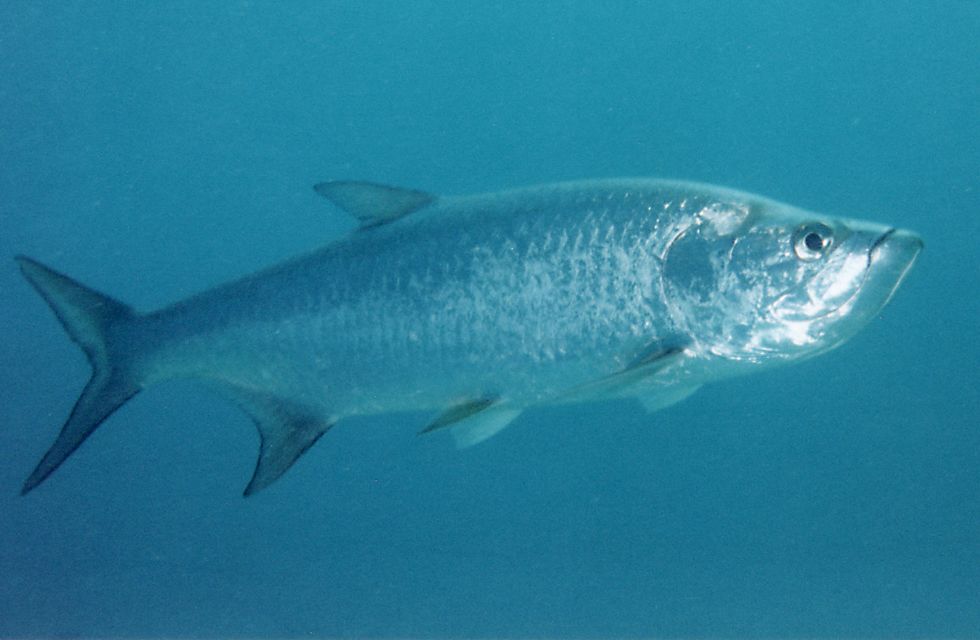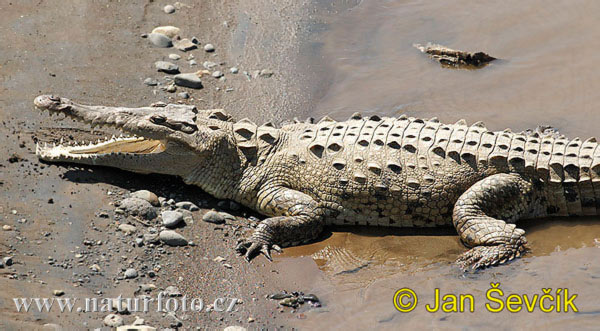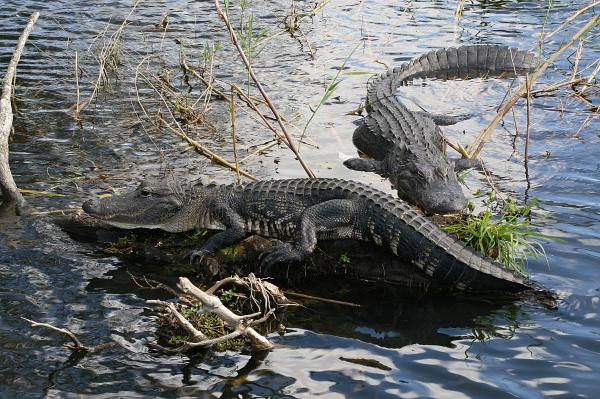Everglades
Everglades National Park is huge. More than 606,688 hectares in area, it is the largest remaining subtropical wilderness in the continental USA. Everglades is also unique, being one of only three sites on earth to have been declared a UNESCO World Heritage Site. However, unless you know what to expect and where to look, Everglades can be disappointing for the visitors. It is incredibly flat. Looking out across miles and miles of sawgrass is like looking at the ocean.
Many residents and visitors see Florida as a paradise. But, like all places that people find particularly attractive, Florida faces challenges in safeguarding and restoring its natural landscapes. Florida's increase population, 1999, results in the loss of native habitats, like birds, aligattors, fishes that are rarely seen in other places of the world, and other pressures that compromise the land’s ability to support native plants and animals.
Animal Life in the Everglades
Everglades National park lodges all kinds of animals, from the smallest insects, mamals and birds, to the largest reptiles we can imagine. Everglades national park is considered a national reserve in south florida, not only because most of the species that live within the perimeter of the park are considered endangered species, but also because of its endless variety of nature and vegetation.
Marine life
Many acuatic animals find refuge in the everglades, some of the mos important are:
American crocodile (Crocodylus acutus)
Green turtle (Chelonia mydas)
Atlantic Ridley turtle (Lepidochelys kempi)
Atlantic hawksbill turtle (Eretmochelys imbricata)
Atlantic leatherback turtle (Dermochelys coriacea)
These Animals are not only imporatant because of their huge contribution to the park, but also because they are considered endangered species and some of them are only seen in the everglades.
 Types of Fish in the Everglades
There are thirty species of fish native to fresh water in Everglades National Park. Fish are very important to the Everglades environment. They are the main source of food for larger fish, wading birds, and even alligators. Native fish also do a great job of controlling the insect population. During the summer (wet) season, the water level in the park is high and fish are scattered. In the winter, when it is dry, the fish move into deeper water and "gator holes," where standing water is still available. The following are only some of the most important fish species that the everglades has.
Florida gar (Lepisosteus platyrhincus)
The Florida Gar is a long, slender, predatory fish with sharp teeth and an armor of thick scales. The Florida gar (up to three feet or 0.9 meter in length) is often seen near the water's surface swallowing air. If it cannot come to the surface, it will suffocate. Gar are not very good parents. Once they lay their eggs, they abandon them. Fortunately for the gar, their eggs are poisonous to warm-blooded animals, and they are not preyed upon.

Mosquitofish (Cambusia Holbroki)
The Mosquito fish is the most common freshwater fish in the Everglades. Once the water level rises (May or June), this two-inch (5 cm) insect-eater rapidly begins to reproduce throughout the park. It is even found in the salt water of Florida Bay. Aquatic invertebrates are its favorite food. Birds and larger fish feed on mosquito fish.

Least Killifish (Heterandria formosa)
The Least Killifish is one of the smallest fish species (one inch or 2.5 cm long) in the United States. Most fish lay eggs, but least killifish, like mosquitofish, bear live young. They are so small, they can only have one baby at a time. It makes up for that by having one baby a day throughout the few weeks of its adult life. A very efficient assembly line! It has to be productive, because the least killifish is a favorite food of birds in the sawgrass and spike rushes. The least killifish feeds on tiny insects and plant material.

Sailfin Molly (Poecilia latipinna)
The Sailfin Molly is a small (5 inches or 13 cm long) live-bearer that lives in both fresh and salt water. It is the only true herbivore (plant eater) of the freshwater fishes. Some of you may have one in your aquarium.

Largemouth Bass (Micropterus salmoides)
Largemouth Bass are a favorite among fishermen. In the park, fishing is allowed in some of the fresh water areas. Fishermen should first review a copy of the fishing regulations. Scientists have recently discovered that largemouth bass have a lot of the metallic element, mercury, in their bodies. They are not sure where the mercury is coming from, but they do know it is poisonous to humans and wildlife. In some areas, exotic species of fish are crowding out the bass.

Tarpon (Megalops atlantica)
Tarpon are found on both sides of the Atlantic and range as far north as Nova Scotia, although they usually don't occur north of Cape Hatteras, and extend southward to Brazil. It is rare to come across this type of fish in the everglades

The Everglades sentuary
The Everglades setuary is an important "nursery" for many marine species. Without this protected area a 300 million dollar sports fishery and a 100 million dollar commercial fishery, adjacent to the park, would be in jeopardy.
Commercial fishing is prohibited in the park. Sport fishing is closely monitored and regulated. Both of these actions are an attempt to protect against overharvesting, maintain a sustainable breeding stock, and ensure a balanced ecosystem for future generations.
Park researchers are concerned because thousands of acres of seagrass are dying in Florida Bay. This die off could seriously affect other members of the food chain. The cause of the die off is unknown. Theories point to several possibilities: a disease organism, the need for a hurricane to "flush" the bay of some of its mud which appears to be "choking" seagrass in some areas, or the increased salinity of the bay caused by diverting fresh water from the Everglades to nearby cities and farms. Increased salinity is also suspected of decreasing reproductive success in some marine animals.
Perhaps the problem is a combination of all of these theories. In any event, restoring the Everglades fresh water may be also be a key to preserve these marine species such as fishes and turtles. Water conservation may prove vital to protecting this valuable resource. Alligators and Crocodiles in the everglades
Everglades National park is the only place in the world were alligators and crocodiles live together in the wild, both the alligator and crocodile are very simililar at firts glance.
American Crocodile
The American crocodile is one of 13 different species of crocodiles in the world. Crocodiles are brownish-green, have a long, narrow skull, and pointed snout, and a streamlined body. The tail is used like a paddle and is very powerful. A crocodile can swim as fast as 20 miles an hour. Even when its mouth is closed, all its teeth are visibvle. Their teeth last two years and are all replaceable. Crocodiles can grow to be 20 feet long and can weigh up to 2,000 pounds.
Crocodiles eat mostly fish, but have been known to catch and eat anything that wanders near enough. They swallow their prey whole, usually after drowning it, and they never chew. They have a tongue, but it doesn't help in their digestion. Crocodiles eat rocks which stay inside the stomach and help to grind up their food. Some scientists say that this helps keep the crocodiles from feeling hungry, or serves as extra weight while swimming or diving, to stay stable in the water.
The American crocodile has an interesting way of attracting fish to them. They throw-up a very small bit of food which attracts fish making them much easier to catch.

Alligator in the Everglades
The American Alligator has a large, slightly rounded body, with thick limbs, a broad head, and a very powerful tail. They generally have an olive, brown, gray or nearly black color with a creamy white underside. An adult male is typically 11.2 to 14.7 ft (3.4 to 4.5 m) in length, while adult females average 8.2 to 9.8 ft (2.5 to 3.0 m). The tail, which accounts for half of the alligator's total length, is primarily used for aquatic propulsion. The tail can also be used as a weapon of defense when an alligator feels threatened. Alligators can travel very quickly in water but are generally slow-moving on land, alligators can lunge short distances very quickly. They have five claws on each front foot and four on each rear foot. American Alligators have the strongest bite of any living animal.
Alligators eat fish, birds, turtles, snakes, mammals, and amphibians. Hatchlings, however, are restricted to smaller prey items like invertebrates. Insects and larvae, snails, spiders, and worms make-up a big portion of a hatchling's diet. They will also eat small fish at any opportunity. As they grow, they gradually move onto larger fish, mollusks, frogs and small mammals like rats, and mice. Sub adult alligators take a larger variety of prey ranging from a snake or turtle to a bird and moderate sized mammals like a raccoon.
Once an alligator reaches adulthood, any animal living in the water or coming to the water to drink is potential prey. Adult alligators will eat razorbacks, deer, domestic animals including cattle and sheep, and are often known to kill and eat smaller alligators. In rare instances, large male alligators have been known to take down a florida panther and an american black bear, making the American alligator the apex predator throughout its distribution. The American alligator is known as King of the Everglades.The stomachs of alligators often contain gastroliths. The function of these stones is to grind up food in the stomach and help with digestion. This is important because gators swallow their food whole. These gastroliths are also used in buoyancy control.

| |